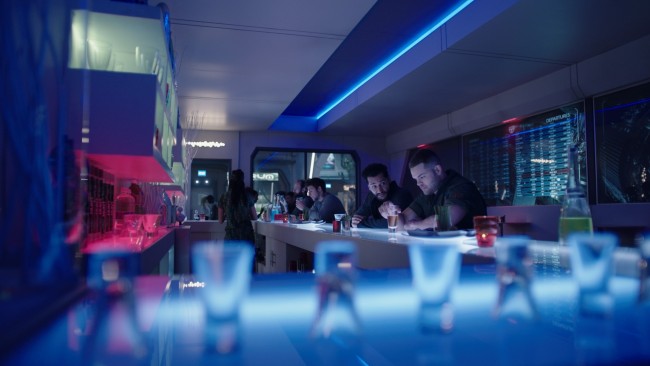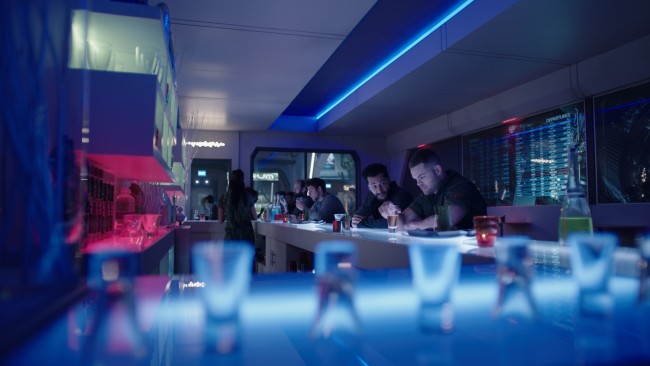
 Hard edged without being clinical: The Expanse has a unique look
Hard edged without being clinical: The Expanse has a unique look
We don’t often feature manufacturer-supplied case studies on this site, but given the collision of two of our favourite subject matters — compelling small screen science-fiction and lenses — this one made the cut. Read on.
In 2014, when Syfy announced a commitment to 10 one-hour episodes of The Expanse, it was (and still is) the most expensive show the channel has ever produced. Based on the bestselling book series collectively known as The Expanse, written by Daniel Abraham and Ty Franck (under the pen name James S. A. Corey), critics highlighted the series’ beautiful visuals, lensed by Jeremy Benning, CSC.
The eagerly-awaited third series wrapped production in December.
“I love Cooke lenses,” said Jeremy Benning, CSC, the DP for all three seasons of The Expanse. “I’ve been a long-time user of Cooke’s S4/i, miniS4/i and 5/i lenses, and for The Expanse, I wanted a gritty, hard, but human look — Cooke 5/i primes were the natural choice from day one.”
The Expanse is primarily shot via 2-cameras using ARRI ALEXA Minis at 23.98fps, ProRes 4444 UHD 16:9 with a third ALEXA Mini brought in when needed. “With digital cameras, the Cooke 5/i lenses deliver something gentler that takes the edge off the crispness — it’s still super sharp, but I get rounder and more gentle faces, great defocus, and wonderful fall off between foreground and background. DPs always talk about ‘The Cooke Look’ and for me that means a creamier, softer, three-dimensionality with great bokeh.”
Benning prefers not to use any filtering for The Expanse, having done some tests during season one, although he will make use of the occasional 1/16th, Classic Soft. A major percentage of the show’s visuals are in-camera, with VFX being used for set extensions and exterior space shots. For example, in seasons two and three, there are very dark, almost cave-like environments that needed to show bioluminescent particles and walls. Using ultraviolet pigment built into the sets and UV light to fluoresce and almost totally light the set, Benning was able to capture an ethereal look that would just need some VFX augmenting in post. This UV effect meant extremely low light levels on set: the T1.4 Cookes and 800 ISO Minis handled that very well.
“The Expanse is visually different from a lot of typical television science fiction,” said Benning. “The series has a hard-edge look without being clinical. The sets are often techie and harsh, and the lenses help take some of that edge off and add more character, sort of a graphic novel look to the images.”
Production of The Expanse is 90% studio-based, with one location day per episode. The sets are mostly complete 360-degree environments with walls, floors, and ceilings. Benning worked closely with the show’s production designer Tony Ianni to work lighting into the sets, selecting the type of lighting and the materials the light would pass through. The sets are virtually entirely lit practically.
“Primarily, we use LED ribbons mixed with some various film-based and theatrical/rock-and-roll lighting,” explains Benning. “We did extensive testing to make sure we had no flicker or any other issues. During season two, we started making our own lights for our standing sets – it’s just so much more economical to build rather than to rent, and we can replicate most things the rental fixtures can do.”
For The Expanse, Benning had the full 9-lens set of 5/i primes, consisting of 18mm, 25mm, 32mm, 40mm, 50mm, 65mm, 75mm, 100mm, and 135mm with T1.4 speed, shared between the cameras, with all lenses being used. Benning also makes use of Cooke's /i Technology lens metadata protocol, which enables ARRI’s Lens Data System in the ALEXA Mini to automatically record key lens data for every frame shot and provide it to the show’s multiple visual effects vendors digitally. This includes focus, iris, and zoom data, so that visual effects used to extend the sets or add in a new background can be seamlessly tracked to match the in-camera element. This saves a couple of hours per shot that would normally have to be done manually.
“My goal is to keep the audience in the world of the show, making them believe that what they see is real,” says Benning. “I often shot the Cookes wide open, to take the edge off the “set” aspect of the environments, keeping the focal point on the actors’ eyes. That takes the emphasis away from the artificiality of a space craft set. With a defocused background, everything blends so it helps sell the idea of being in a real place — that’s our main goal. Cookes make the background look more like a painting than a set.
“If you are looking for a modern look with less of a clinical feel, that’s what Cooke excels at – with a modern performance factor, plus the slight softness of how they handle defocused backgrounds and faces differently from any other lens,” explains Benning.
[The two series of The Expanse screened so far can be streamed on Amazon Prime in the US and Netflix pretty much everywhere else. Season One was good, though a bit inchoate if you’d not read the books, while Season Two is some of the best post-BSG TV sci-fi you’ll have the pleasure of viewing. Oh, and needless to say, it all looks fabulous. Ed.]
Tags: Production


Comments